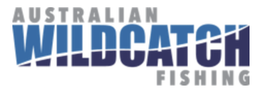HISTORY OF SCIENTIFIC SURVEYS PROUDLY UNDERTAKEN BY AUSTRALIAN WILDCATCH FISHING.History of surveys: Australian Wildcatch Fishing has conducted a variety of research surveys for AFMA, MAFRI, FRDC and SETFIA. Research surveys ranged from East/West stock assessments for quoted species, bycatch and byproduct species to SESSF Fishery Independent Survey which provide abundance indices for recovering species which have a Bycatch TAC. Research surveys conducted: MAFRI Port Phillip Bay Anchovy Survey SESSF Fishery Independent Survey both Summer and Winter FRDC Mackeral and Egg Survey SETFIA East Coast Orange Roughy Stock Survey |
